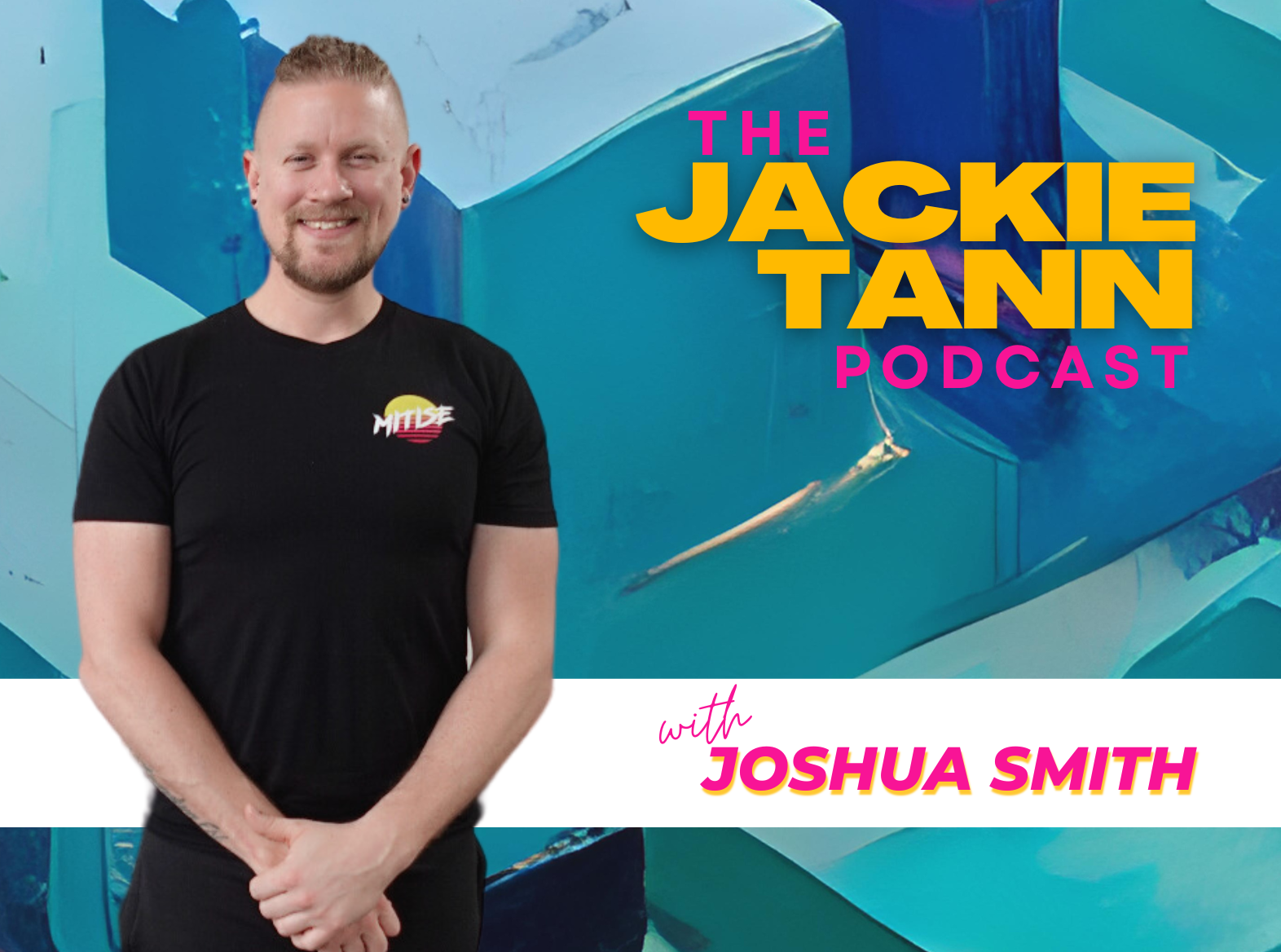Jackie 0:10
Today on the show, I chatted with Bondi lifeguard Dean Gladstone. While many of you would know Dean from the internationally recognised TV show Bondi rescue, he is also a personal trainer, Wim Hof instructor, yoga teacher, and oxygen advantage instructor. And before you ask, what is that? Let me tell you, if you implement just one action from this episode, you will feel profound health benefits because we talk about breathing techniques, the biochemistry and biomechanics of functional breathing, and what it actually means to breathe functionally. So without further ado, enjoy this episode with Dean Gladstone. Dean, thank you so much for chatting with me today. I’m looking forward to chatting about all things breathwork because I know you are a Wim Hof instructor, and also an oxygen advantage instructor. And that’s the stuff that I’ve been looking into. So, I’m looking forward to understanding the differences between them. But before we get into that, tell us more about you and your journey. Obviously, you’re very well known as a Bondi lifeguard. But, uh, but you’re more than that. So tell us about you.
Dean 2:52
Where do I start? Um, there’s lots to tell. The breathwork story is sort of intertwined with lifeguarding, I believe. And, you know, you could look much deeper into it on a number of levels. And possibly even link some of the learning difficulties into me being a lifeguard as well, which, you know, probably contributed to my dysfunctional breathing as a child. I ended up in hospital as an asthmatic when I was very young, eight or nine. I don’t know, if someone told me or intuitively I just, I worked it out that there was a connection between I was swimming training at the time, and I’d stopped swimming training. And regulating my breath for swimming training really helps me in everyday life. And that really helps my asthma, it was just so different. When I was swimming training, I was literally doing the cross-country at school, running around all day, playing football, you know, hyperactive young child and then when I wasn’t swimming training, I couldn’t, I couldn’t do all these things. So it kept me swimming, which, you know, contributed to me being a lifeguard having a having a career and what a beautiful, you know, career I’ve had, I feel so grateful to be able to help so many people and and learn so much like, you know, being I learned so much in life a lot of what I talk about and teach now, in Wim Hof in oxygen advantage comes back to dealing with people, you know, possibly in some pretty serious scenarios at the beach,
Jackie 4:31
You’re a yoga instructor as well. And I’ve heard you mentioned in the past that breathing with that has really helped you in and potentially was the catalyst for studying breathwork even more, so is that right?
Dean 4:45
Yeah. Yeah, that’s right. Yoga gave me what swimming was giving me without swimming. So I was learning to regulate the breath and breathe nasally and you know, some of the things I am so passionate about now. Yoga gave me sort of, you know, first I started doing it because I wanted to improve flexibility on mobility. But then I realised the regulation of breath, combined with movement, was just fantastic for me. And yeah, I sort of fell in love with yoga, which, which really, sort of catapulted me into Wim Hof. And this oxygen advantage or functional breathing, stuff that I teach and love at the moment. It’s just so simple one. So such a game changer for some people.
Jackie 5:35
Yeah. So tell us more about Wim Hof. Because I don’t, all I see is people getting into ice baths and taking deep breaths. So explain what the method is?
Dean 5:48
Yeah, Wim Hof himself or the method?
Jackie 5:55
Yeah, tell us about the guy. And then tell us about the method.
Dean 5:58
So more and more people have heard of him or have probably heard of him, whether they noticed him or not, being referred to as The Iceman. And yeah, crazy guy in his early 60s. He’s famous, for he has broken 25 to 30 world records. And they generally involve some sort of feat of human endurance that people would seem rather impossible. Climbing mountains in his shorts, two hours in an ice bath, running a marathon in the desert. There’s a whole range of things that he’s done. So he’s famous for being able to control his body on a level that other people thought was impossible. Yeah, wow. And what really put him on the map, he was a bit of a circus sideshow for doing all these weird and wonderful things. He was challenging scientists to test him to show what he was doing because he said he never got sick. What he was doing actually affected his immune system. So in 2011, in a university study, they injected him with an endotoxin, which is like the flu. So they pretty much injected him with the flu. And he was able to do his breathing method to literally breathe out the symptoms of the flu.
Jackie 6:36
What, what?
Dean 6:55
So this, so this sort of, and before that, it was thought that it was impossible to affect your innate immune system. And so there is a change in science. And this really gave him a lot of validation and really put him on the map. There were a lot of naysayers about his method. Then, you know, when I teach it, like some, you know, some people will believe and stuff and then other people like to see the science or like some sort of proof. Yeah, this certainly just really gave that momentum. Then he started going worldwide. And I don’t know when I picked up on it, maybe in 2015 or 2016. It was on Joe Rogan’s podcast and Tim Ferriss. It just sort of kept coming across into me, into my path. Yeah, I just started doing it. I’m like, Oh, this is great. Then I bought his 10 week course. And then he came out to Australia and, like, I got to see him. And then flew home to go and do this. So yeah. And it terrified me the thought of climbing a mountain in board shorts. Because I used to, and still do, get cold, and quite easily.
Jackie 8:23
Well, yeah, I mean, that’s, for me, that’s something that scares a shot out of me. Because cold hands, cold feet, and even. I mean, the temperatures don’t have to be all that low for me to feel quite cold and go walking around and not feel my toes. So that’s really interesting to me. Can you tell us a bit about I guess the biochemistry behind what he does and how he’s able to? I mean, fight off the flu?
Dean 8:53
Yeah. Also, his breathing method. There’s a proven YouTube clip. I’ll send that through. I don’t know if you can check them. And it’s an infographic. Yeah, um, he’s breathing method releases cortisol and adrenaline, adrenaline, so it releases stress hormones. Yeah, and that fights off the flu basically. So it’s, one would think most people would generally think to, you want to relax the body and meditate, but it’s, you know, it’s this building up adrenaline stress in the body, and that helps. It increases any inflammation and decreases pro-inflammatory cytokines.
Dean 9:43
That’s a stress response in the body. So he is inducing a stress response. Yeah. And in fact, the breathing method is what we would deem a dysfunctional breathing method. Yeah, so if someone was breathing like that, in everyday life, you could go oh, my God, you know, this person is hyperventilating, but when you do it intentionally, you know I call it super ventilation or intentional hyperventilation. Yeah, there’s many names for it and the Yogi’s have similar types of breathing Tibetan monks, there’s similar method to this. He’s combined it with cold therapy, and a mindset and it’s really just just gone viral. Basically, it’s huge.
Follow Dean:
Instagram: @deanogladstone
Instagram: @powerofbreath
Website: www.deanogladstone.com
Breathing Course: The Power of the breath
You Tube breathing exercise: Breathing exercise to chill
Get in touch:
Instagram: @jackietann_rmt
Email: jackie@jackietann.com












